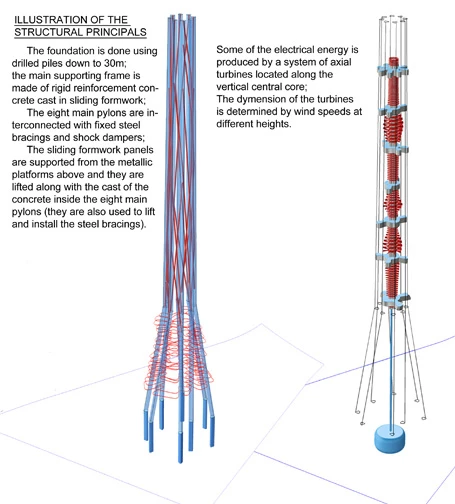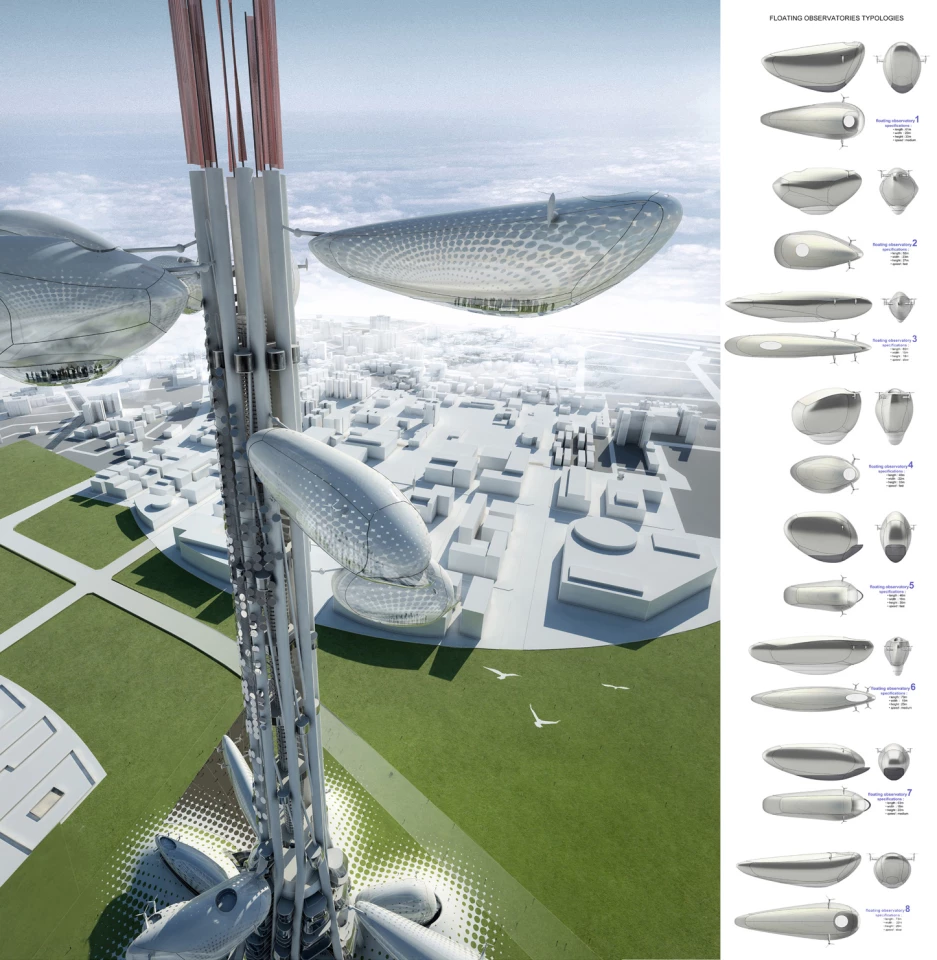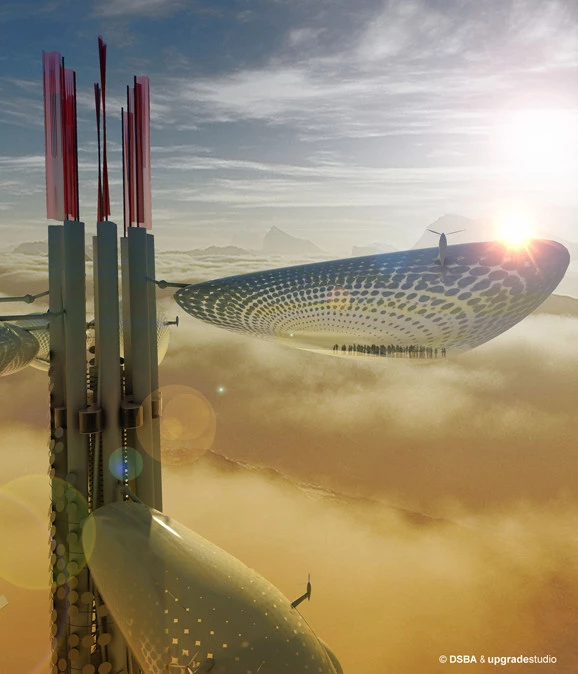It might look like something out of Isaac Asimov's imagination, it might look like it could never stand up, but this bizarre concept building is about to go into construction. "Floating Observatories" is Stefan Dorin's winning entry in the recent Taiwan Tower Conceptual International Competition – and in return for his US$130,000 first prize, now he has to actually build the thing. The new tower, standing more than 300 meters tall with its helium-filled observatory "leaves", will be the crown jewel of Taechung, the third largest city in Taiwan.
Architect Dorin Stefan has had a lot of success in his home town of Bucharest – even snagging the job of designing Romania's pavilions at two world Expos in 1993 and 2005. But his latest design, soon to be built on the mid-west coast of Taiwan, could be the most outrageous of them all.
Standing somewhere around 390 meters tall, Stefan's "Floating Observatories" features geothermal heating and water heating in the basement, natural ventilation through the "chimney" effect, solar cells and axially mounted wind turbines around the building's core for power, fiber optic lighting for its basements, and a rainwater collection and purification system.

But what's really going to get people excited is the blimp-like floating elevator observatory decks moored to tracks on the sides of the building. Self-supporting through the use of helium balloons, built from lightweight materials from the aerospace industry and covered with a transparent polytetraflouroethylene (PTFE) membrane, each observatory carries as many as 72 people as it moves up and down its tracks from the bottom to the top of the building, providing spectacular views both of the Taiwan strait to the west, and the city of Taechung below.

Access to each platform is via extending, enclosed bridges at "deck" floors spaced throughout the building. Each of the building's eight observatories is differently shaped, providing a different experience to visitors in terms of travel speed, internal architecture and of course the view.
The floating platforms would probably be quite a pleasant place to be during one of Taiwan's frequent earthquakes – but you'd probably want to bring them down to earth and get them firmly secured when a typhoon comes through.
The tower is equal parts museum, office space and observatory platform, and is expected to become a focal point both for Taechung's locals and for tourists.

The Taiwan Tower judging panel chose Stefan's entry from a list of 237 entries from 25 countries. Judges noted that there are "many realistic technicalities yet to be overcome" with the design, but praised its "spectacular duality between the stable and the unstable, the vertical and the horizontal, the enclosed and the exposed" and saw it as "a symbol that cannot be erased once it is seen," one that might one day "take its place among the Wonders of the World."
It's certainly a remarkable design – and a remarkably risky and optimistic selection from the judging panel. The real challenge begins now, as Stefan puts the tower through the process of structural design and feasibility studies. Construction is expected to begin in 2012. We look forward to seeing the results!










